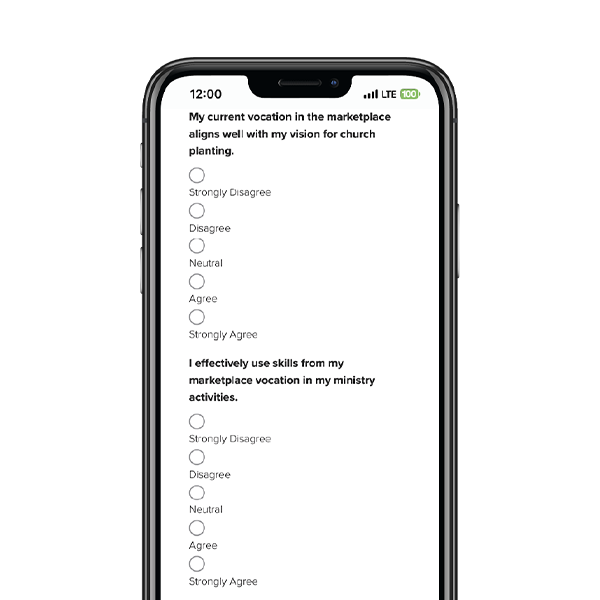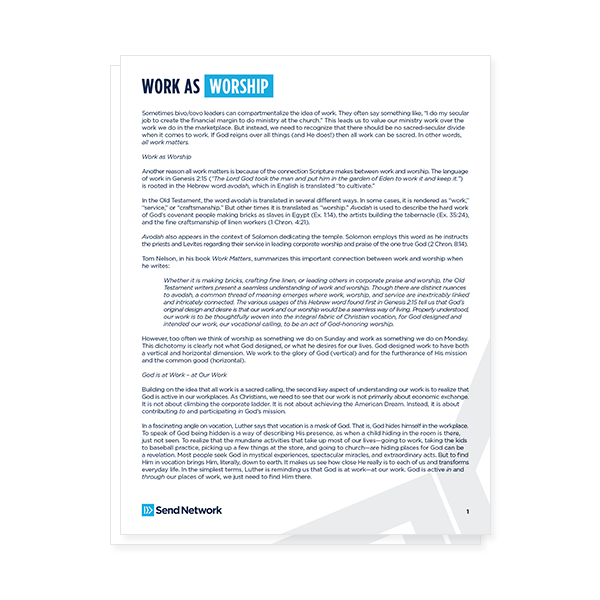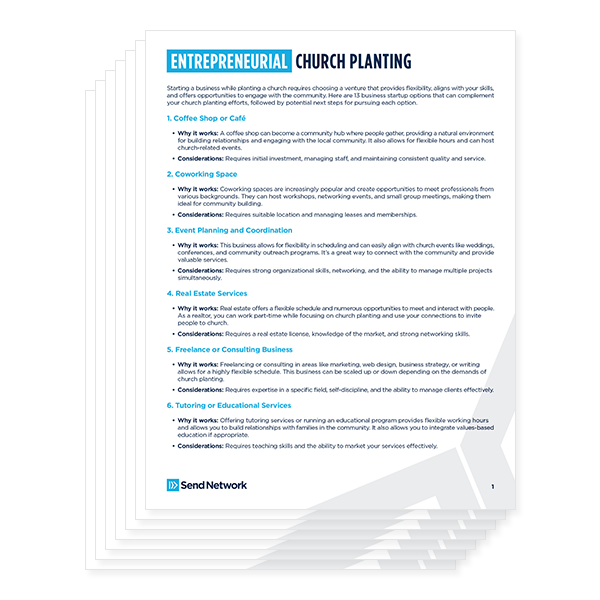7. Structure for growth and impact beyond where you are
Probably one of the more evident things we did early on was expect growth and plan on it. And not because we thought we were good, but rather because God’s call was so strong. I personally believe people can sense when you’re leading from a deep call (as opposed to leading with a finger in the wind), and that type of leadership, which is actually radical followership, is attractive and compelling. Knowing that God had called us to this church plant and that we had no choice but to follow, we simply believed he would do what he promised — build the church. So we led with that humble confidence.
Don’t think I’m saying that Jesus “building his church” means your church will grow in its membership numerically forever. I’m not. But I am saying all churches Jesus builds will impact their surroundings significantly. Making disciples — seeing God save people, seeing those people baptized and taught, then seeing those people obediently reproduce — isn’t simply something that needs to happen (like we’re trying to convince people to “buy in” to God’s sales technique for global evangelization); in Jesus-built churches, it will happen. The power of the Holy Spirit in the lives of believers, the supernatural effects of the Word of God, the visible evidence of God’s people worshiping authentically and passionately — these are some of the avenues in which God sovereignly and inevitably “shows up” and invades our lives with his saving, sanctifying grace (Titus 2). As we’ve said for years, God’s people gifted for God’s purposes will result in God’s power. Simply put, this is what we expected, so we structured for it from the outset.
This ‘impact mentality’ showed up in a number of ways. Here are five simple examples:
How extensive we formed our first staff. We began with myself, a part-time staffer in each ministry division, plus an office manager. All total, that was a staff of seven on Day One. All those positions became full-time eventually, and many of those same people were the ones who enjoyed the journey of growth and impact we took together.
When we planned our service times. We started with an early service so we could intentionally add a later service. And three months after launch day, we did exactly that. Not because we necessarily had to then, but because we knew would have to later. Sure enough, both filled up.
How we formed our budget. Investing in missions and prioritizing global issues helped all of us realize there’s more going on than just what we see here. Sure, we knew we had to be good stewards of our “Jerusalem” responsibilities, but we also knew God could send us wherever else He wanted as well. Would we be ready when He did exactly that?
What we expected in our small group leaders. What I mean here is that duplication was — and is — the norm. Why? Because “your group will impact people and grow, so be ready.” At FFC, having a co-leader or up-and-coming trainee is vital to a continuing impact.
How we asked people to serve. There’s no doubt that the “word on the street” regarding FFC is that we’re somewhat intense. There are probably multiple reasons for this, but one is that we intentionally and consistently ask people to invest time in serving others. Why? Because it’s the normal expectation of a Christ follower (Phil. 2:1-4).
Practically speaking, here’s why we structured for what we knew would happen (future) as opposed to what was happening (present): Transitions are where churches lose ground. This is true when it comes to staff, small groups, systems — you name it, you’ll discover it’s true: It’s the transitions that trip us. But because you can’t avoid transitions, you have to work to minimize their effect. And one of the ways you can do this is by structuring, as best you can, for what is to come, not just what is there.
In a word, this is simply vision. Seeing and believing what God could do, then living and leading in such a way that those around you get glimpses of what’s to come, not just what is. After all, as one church planter told us with a chuckle, “If you don’t see it before they see it, they’ll never see it. So once you see it, start saying it and take steps towards it.”
8. Refuse to believe a building is your answer
No matter how much a young church may embrace its portability (assuming that’s your situation), the stark reality is that most of your people will get weary of what they perceive to be “temporary.” They will inevitably, at least here in America, begin to long for a permanent place. While that’s not sinful, it’s not a solution either. Churches don’t get healthier just because they own a piece of property. Brick and mortar don’t equal life and vitality. While a building may be in your future, keep reminding your people it’s just a tool, not a treasure. Our real treasure is Christ, and the place we meet is just a way to help us spread the news about the incredible value of the real treasure we have — Jesus!
Here’s a real-life reflection: About six years into our existence, we purchased an old warehouse. And though it seemed like, in the days of renting, that we were setting up and tearing down for a long time, the truth is we didn’t. In fact, the average rent time for most new plants is about eight years. Yet we moved in after only six.
Was it right? You bet! God provided in a supernatural way, and our people are quite content. But what is so ironic is that our growth rate slowed once we bought. Those two things may or may not be related; correlation doesn’t always equal causation. My opinion? There is a slight connection somehow in that we probably exhaled loudly and thought to ourselves subconsciously, “Finally!” Regardless, we have to work just as hard with our building (probably even harder) as we did when we were without the building. My point? A permanent place is not a problem solver; it’s just a problem relocator.
You see, the church “machine” ramps up when you get a building. Facilities to clean, lights to keep on, schedules to manage, property to watch and maintain, pests to control, codes to follow … you get the point. Without even realizing it, non-building ministry can get lost — or clamped down on — because of what we perceive to be the mandates of the building. Watch out for the unintended consequences.
I’m not here to offer a quick solution or hassle-free fix. Managing the ministry and the machine is a weekly part of every pastor’s routine in some way. I’m simply encouraging you, faithful church planter, to find appropriate contentment in your current mobility. After all, a building is not your answer.
These are eight of hundreds of lessons I’ve learned over the last 14 years. My prayer is that they will help some of you navigate the joyful journey of church planting.,
Published August 23, 2018




